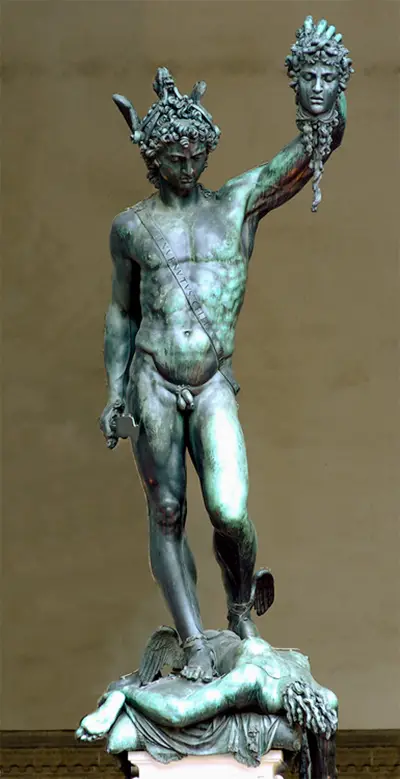Benvenuto Cellini was a highly significant 16th century artist who specialised in sculpture and drawing.
Introduction
The Florentine would become a key part of the Mannerist movement which bridged the Late Renaissance with the later era of the Baroque.
Early Life
The artist was banished from his hometown after an incident of affray whilst still a teenager, but he used this situation positively by living in a number of other regions, such as Siena, Bologna and then Rome. He showed merits as a musician but would take on training as a goldsmith which was a viable career path at that time. He produced several silver-based items which would gain favour with some notable figures within Rome, including Pope Clement VII.
Political Turbulence
During an attack on Rome he would show great bravery and some of the rewards for these actions would include his acceptance back in Florence after several years of living away. He would use his new skills to produce a series of designs for medals which would provide him with a steady income and an opportunity to continue to develop his craft in metals. For several years after that he would share his time between Florence and Rome, though he then became embroiled in further serious scandals which forced him to flee to Naples.
Controversial Reputation
Several murders would be connected directly to Benvenuto Cellini, making it necessary for him to lie low for a period, as well as seeking agreements before he would be able to return. Ironically, he would later be imprisoned for a theft that he most likely did not commit and was kept at the Castel Sant'Angelo before managing to escape.
After his re-arrest the punishment second time round was much more severe, having several attempts taken of his life and living with an expectation of of certain death, be it through an organised, official manner or something more sinister. Eventually one of his most significant patrons would step forward and arrange his release.
It seemed that the net was slowly closing in on a troubled individual who was surely about to receive some form of justice for his alleged crimes of the past, sooner rather than later. The sculptor would move to France and whilst here he would work effectively but had to curb his violent tendencies which he realised he would not have got away with in his adopted country.
Settled Status in Later Life
Sadly, his old behaviour would eventually return and it became necessary for him to return to Italy, where he settled back in Florence as a goldsmith. Additionally, Duke Cosimo I de' Medici would appoint him as court sculptor, with a generous salary and impressive home which marked a dramatic rise to prominence for this complicated character.




